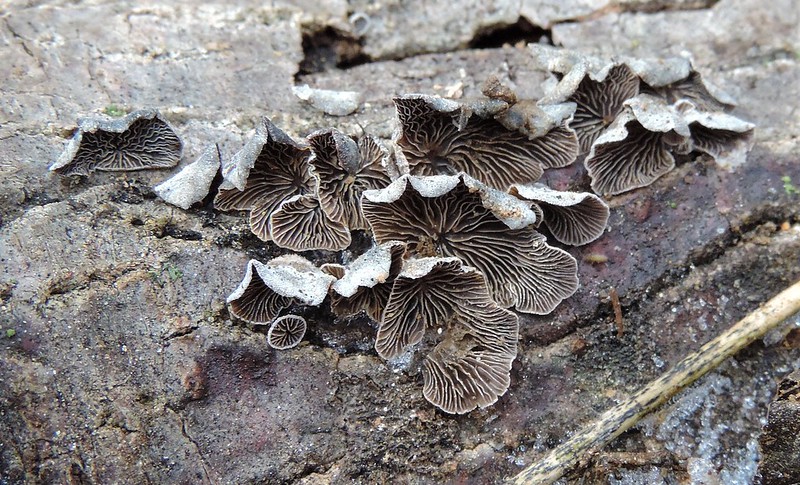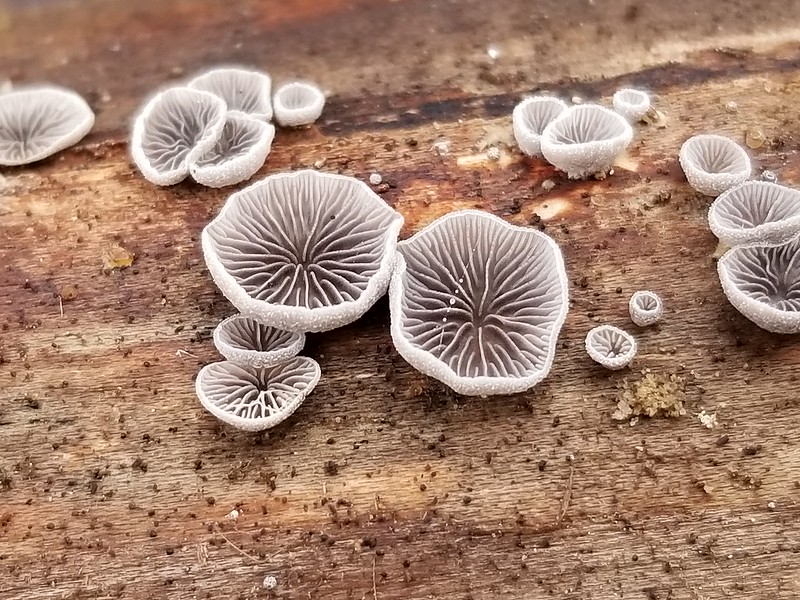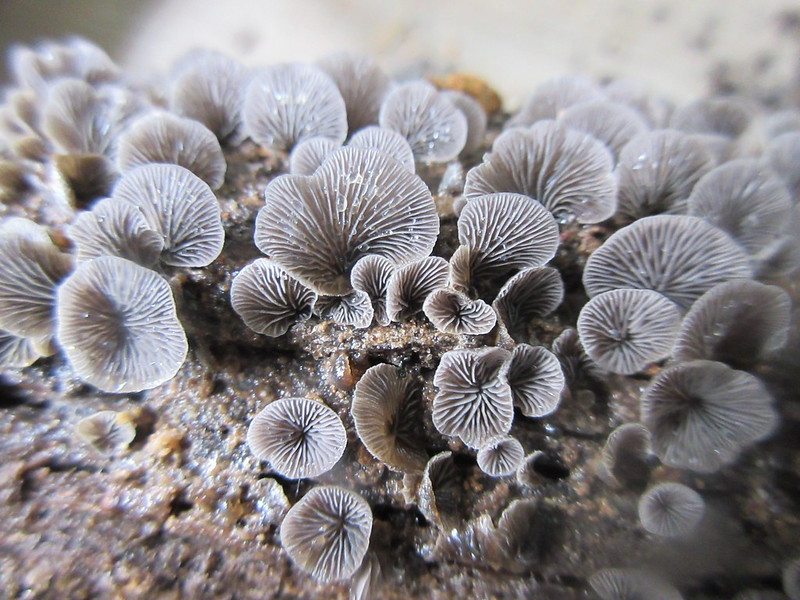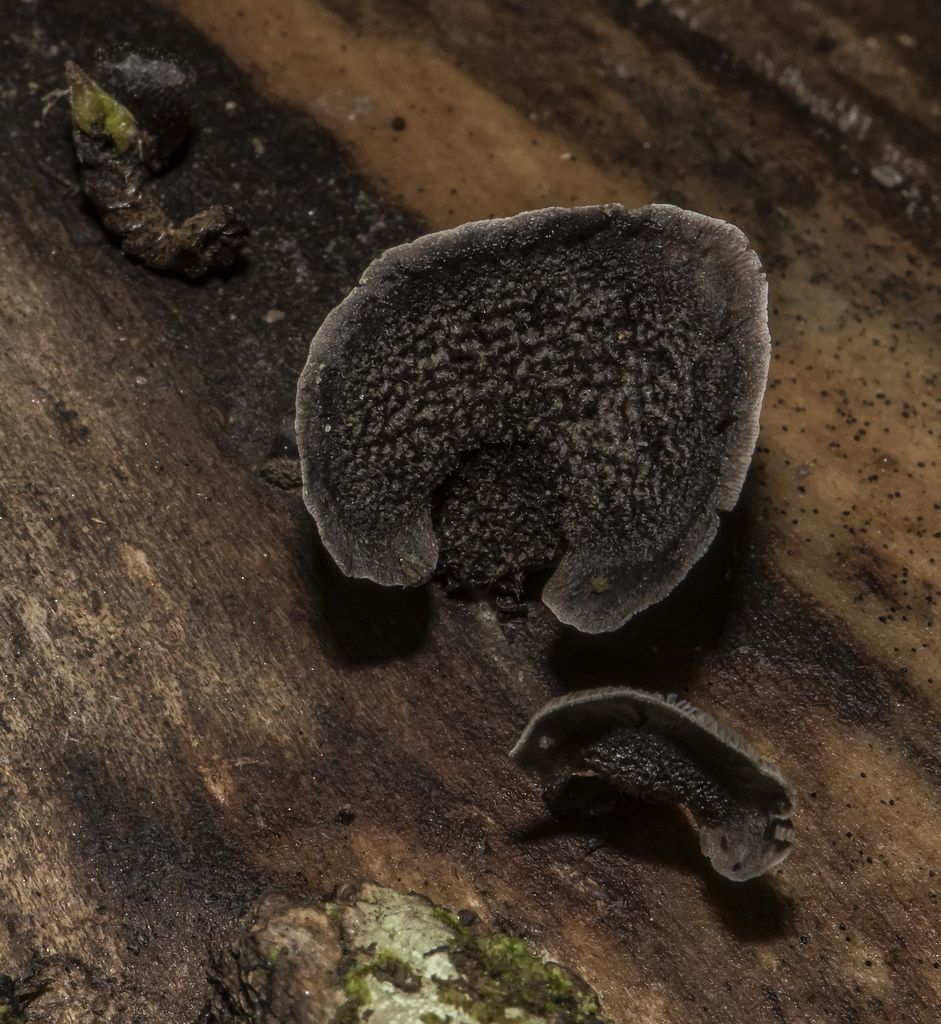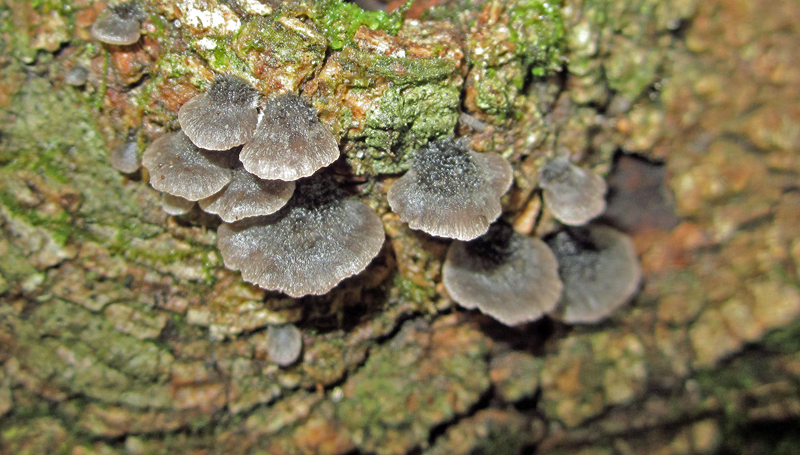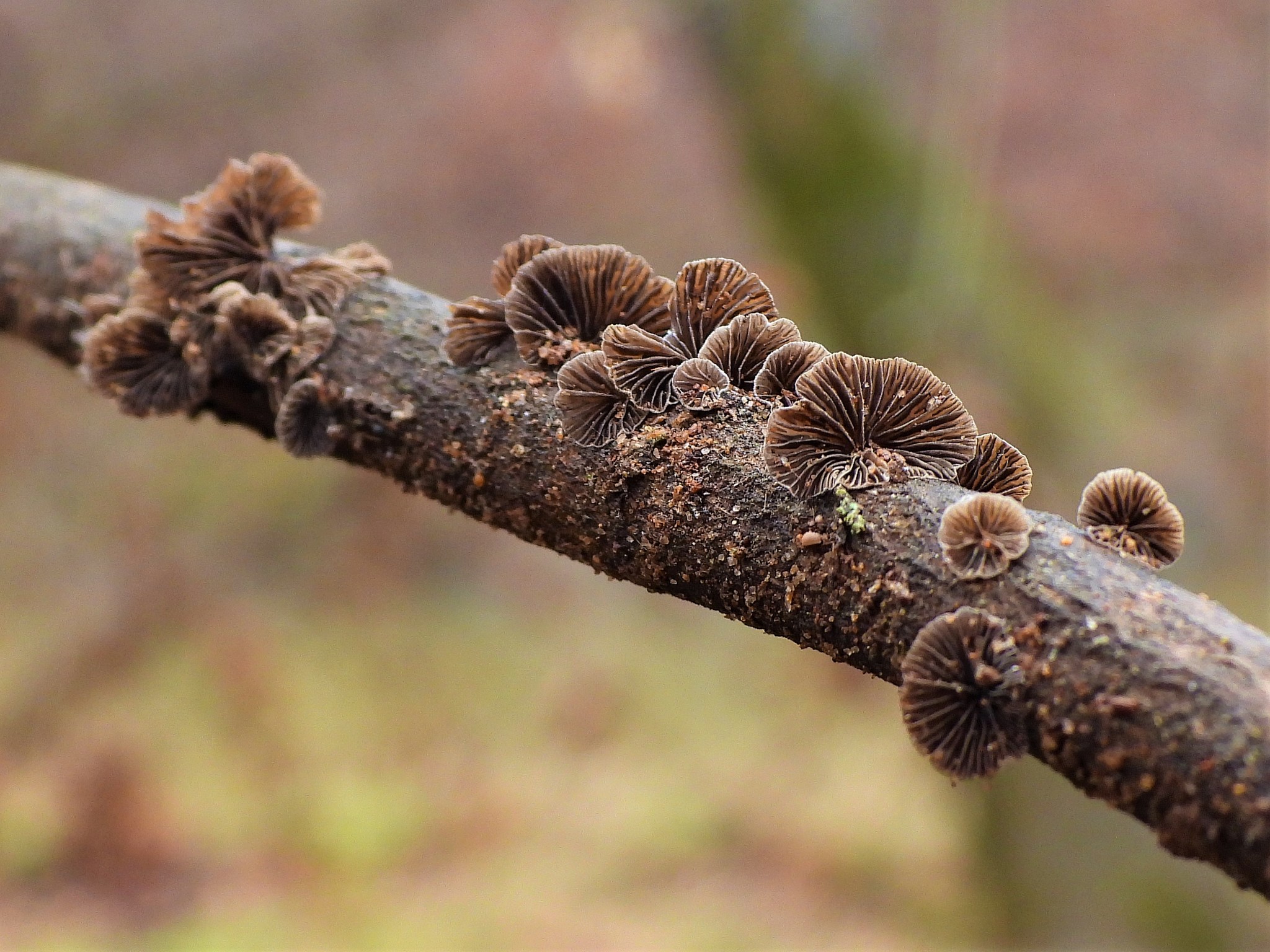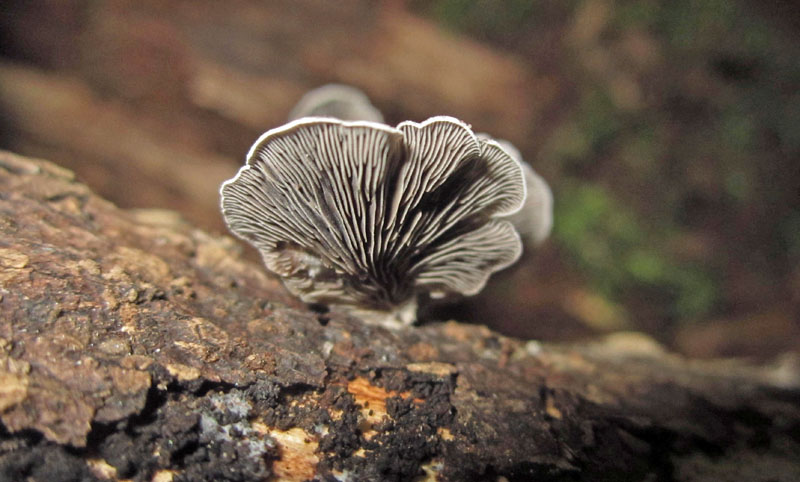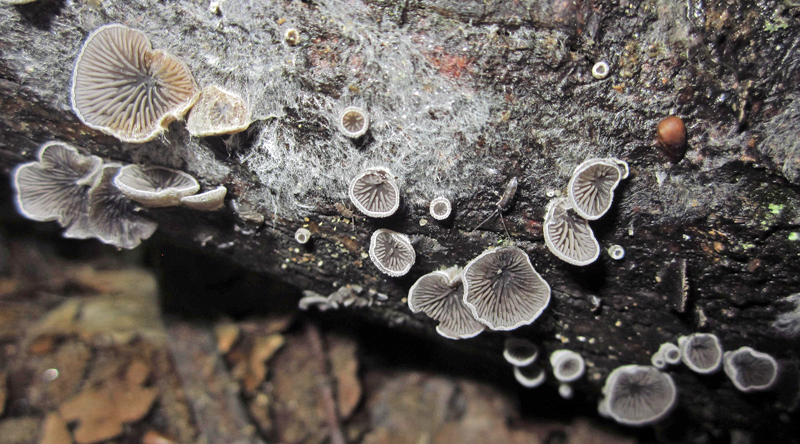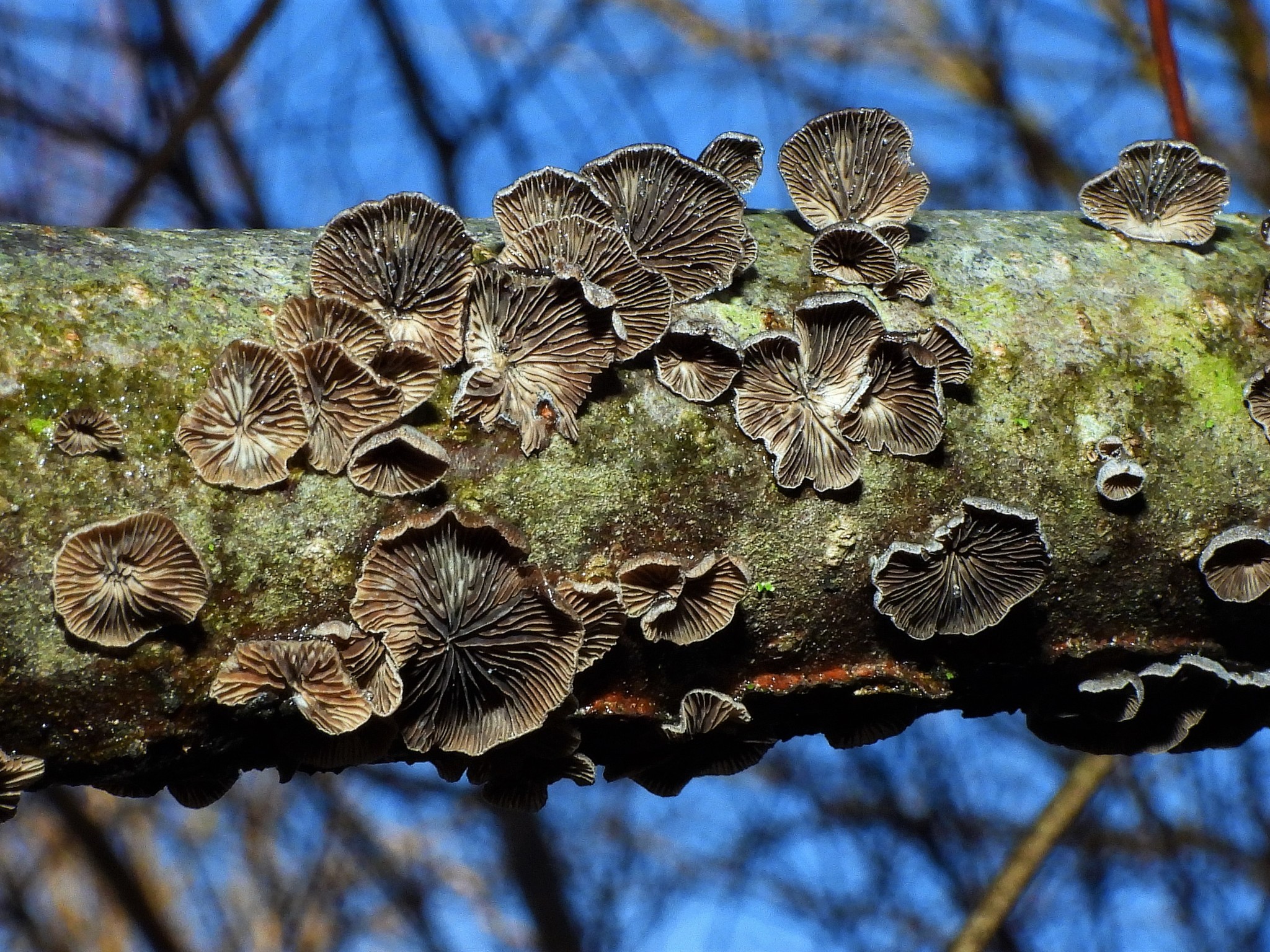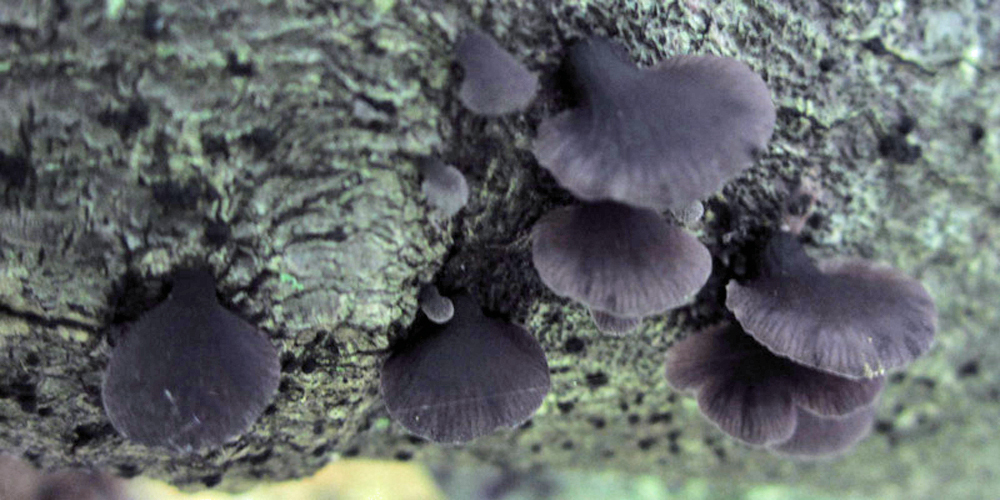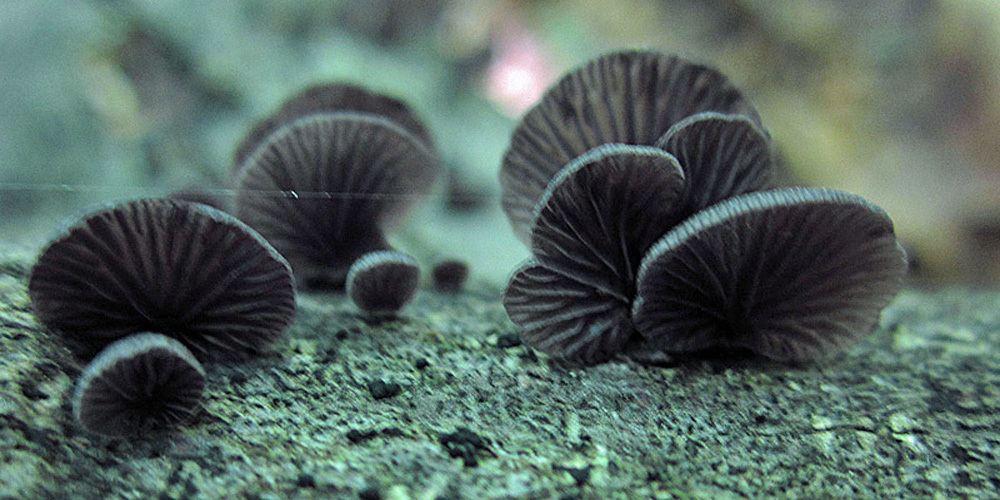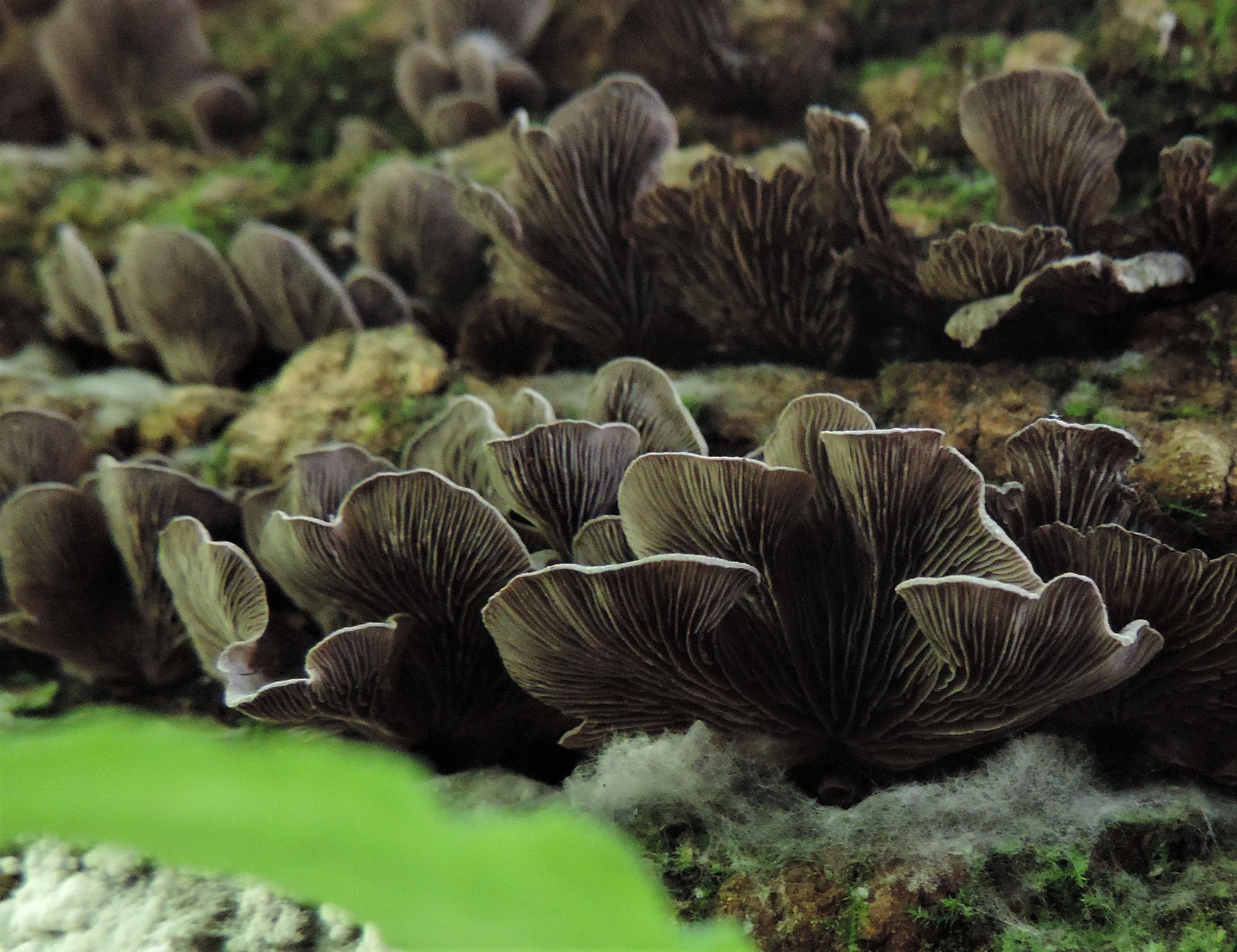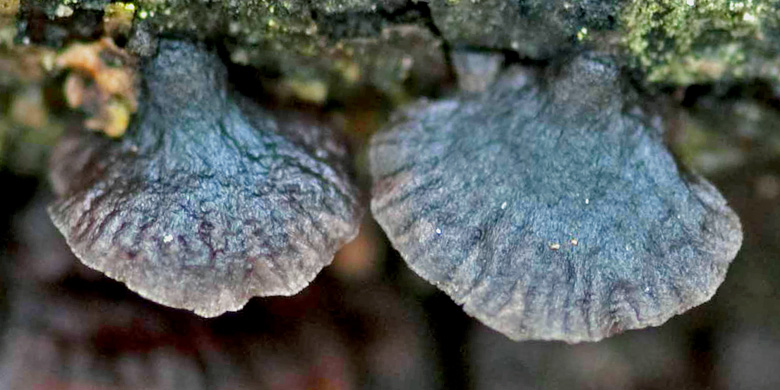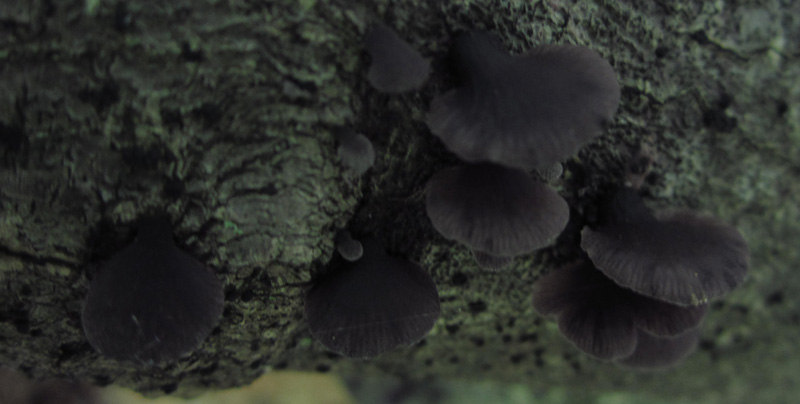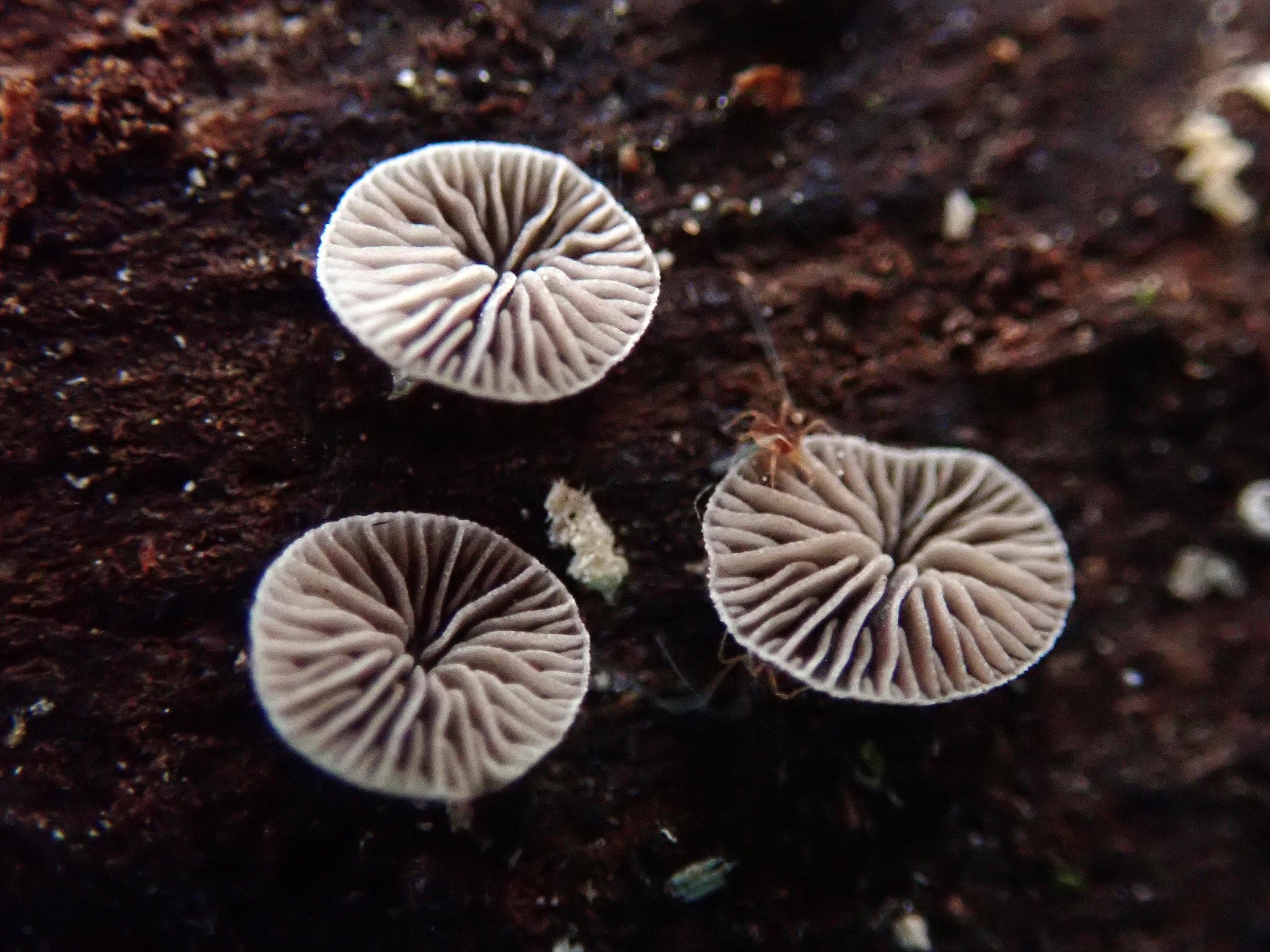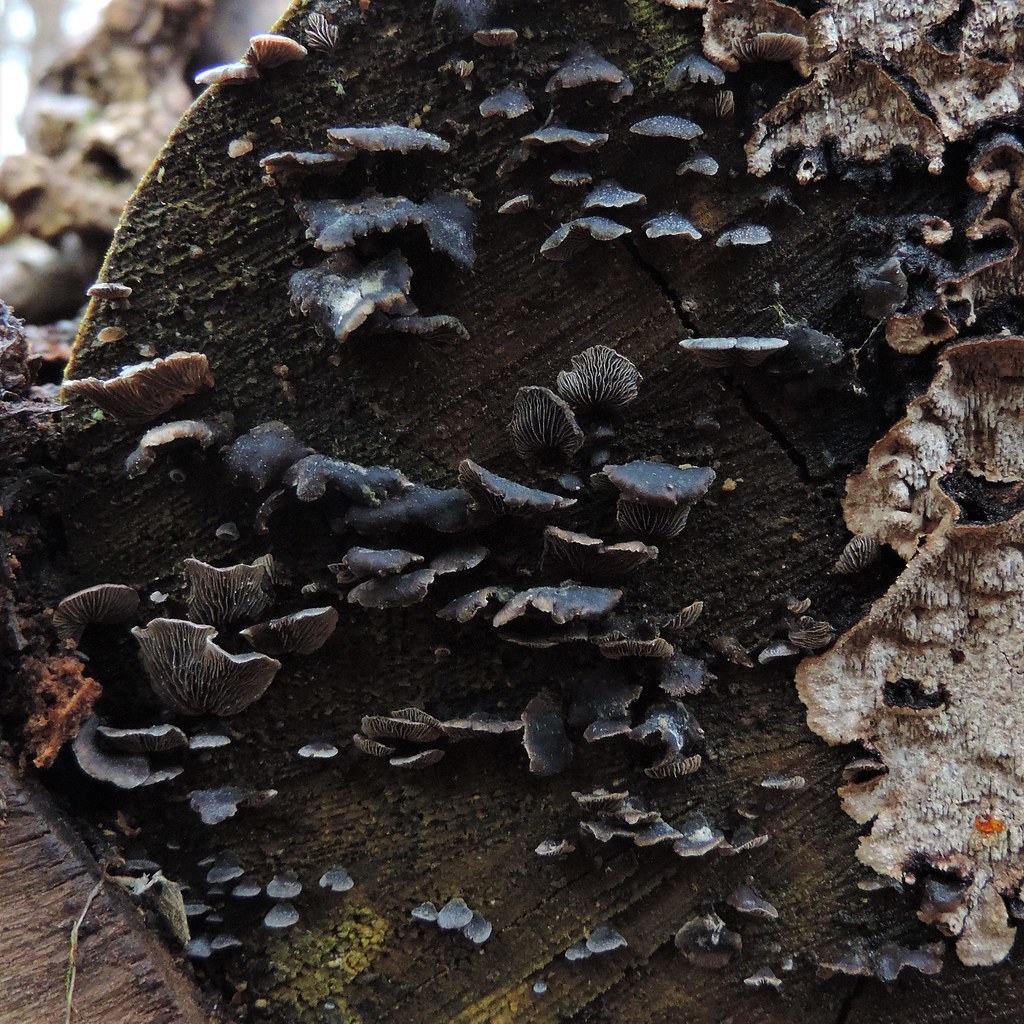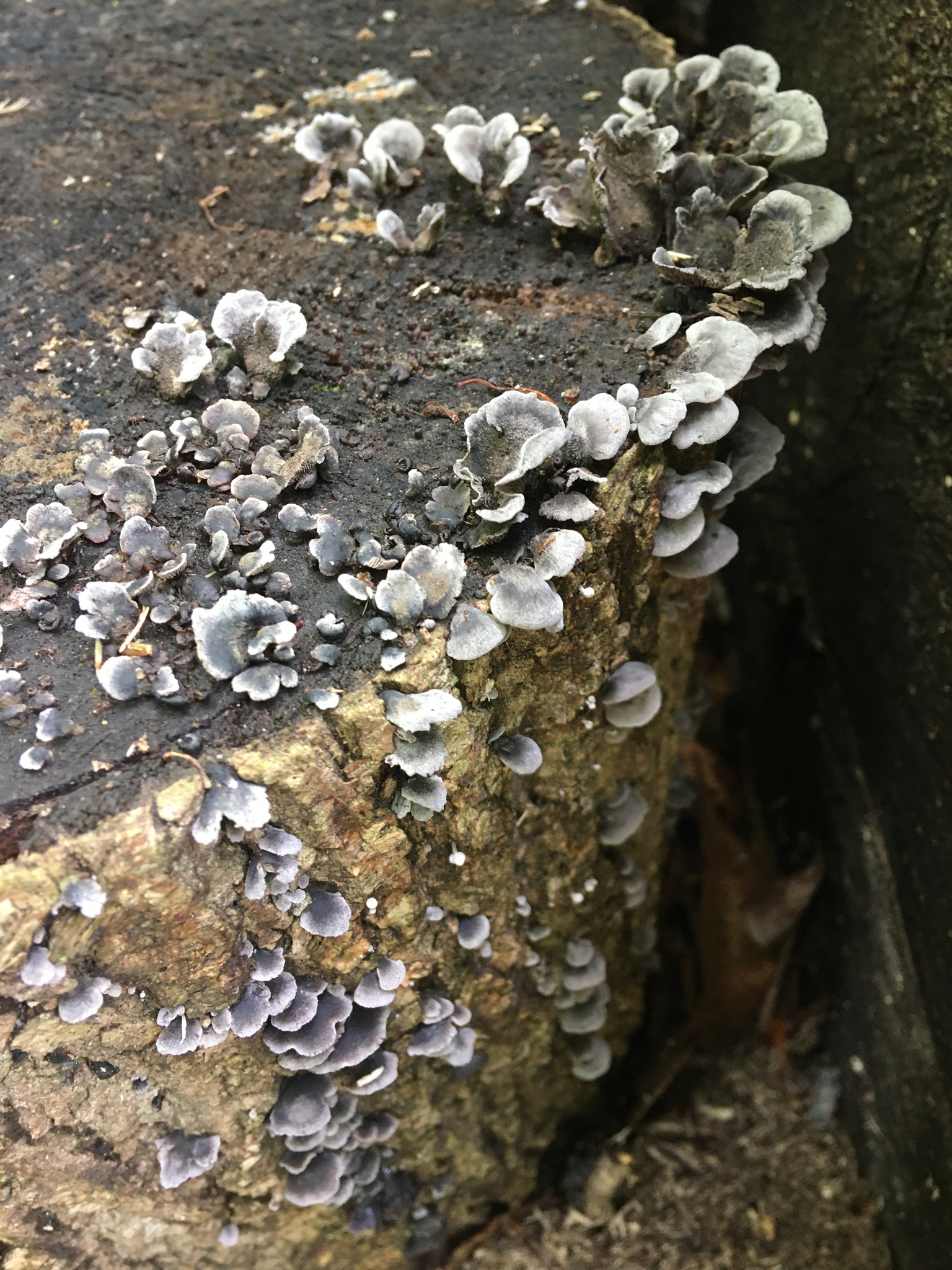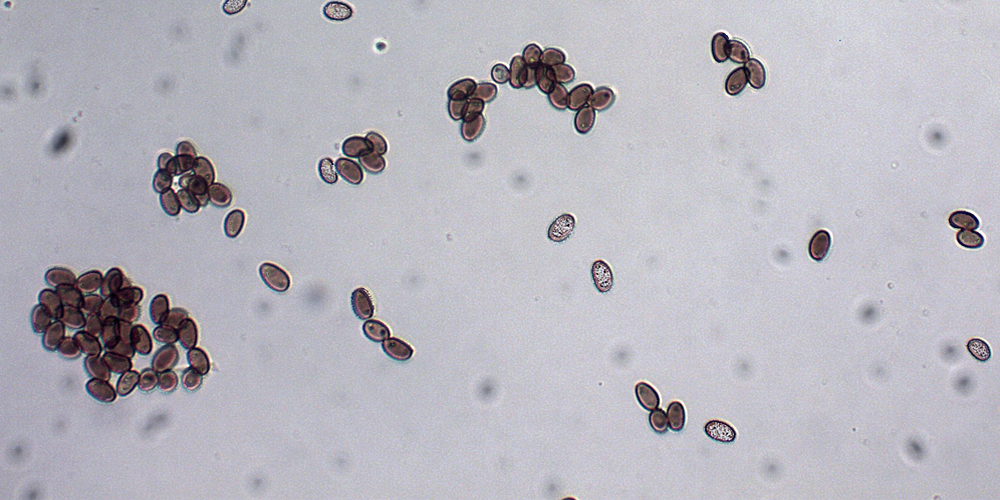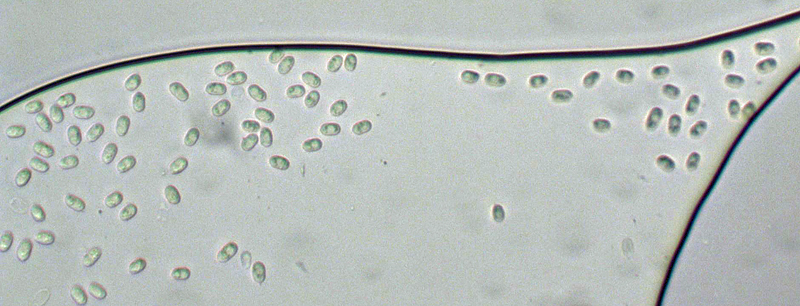Map Snapshot














53 Records
Status
Usually found in groups; mostly on lower portions or bottoms of fallen hardwood branches or on logs, less often on conifers.
Description
Tiny fruiting body: Kidney to shell-shaped, dry, flesh thin; varying degree of hairiness; ranging in color from light tan-brown through gray to black. Gills: Moderately distant to distant, dark with or without white edges. Stalk: None to small pseudo-stalk; laterally attached to substrate.
Note: Using macro characteristics to attempt to identify a species in this genus is challenging and often results in a "best guess." Cap color, density and location of hairs, presence or absence of a pseudo-stalk, and waviness of the margin frequently overlap among species and may vary by age and wear, as well as by species. The two species most commonly found in field guides are R. alboniger and R. applicatus. Generally the spores of the former are somewhat elongate and may be sausage-shaped, while the latter’s spores are closer to round. There are numerous species in this genus so more than spore examination may be necessary to distinguish species.
Seasonality Snapshot
Source: Wikipedia
| Resupinatus | |
|---|---|

| |
| Resupinatus applicatus | |
| Scientific classification | |
| Domain: | Eukaryota |
| Kingdom: | Fungi |
| Division: | Basidiomycota |
| Class: | Agaricomycetes |
| Order: | Agaricales |
| Family: | Resupinataceae |
| Genus: | Resupinatus Gray |
| Type species | |
| Resupinatus applicatus (Batsch) Gray
| |
| Synonyms[1] | |
Resupinatus is a genus of fungi in the family Resupinataceae, of which it is the only member.[2] Species are saprobic, and often found growing on the underside of decaying wood or sides of decaying woody substrates. The generic name is derived from the Latin resupinus (bent backward, inverted).
Description
[edit]Species in this genus have small fruiting bodies, typically less than 1.5 cm in diameter. Basidiocarps are pleurotoid or cyphelloid in shape,[3] meaning they have a reduced stem, and a flattened cap that is kidney-shaped or circular when viewed from above. Gills are well-developed and radiate outwards from an off-center point of origin or lacking.[4]
Species
[edit]The following species are recognised in the genus Resupinatus:[5]
- Resupinatus alboniger Singer 1978
- Resupinatus americanus Consiglio & Setti 2018
- Resupinatus applicatus Gray 1821 - smoked oysterling
- Resupinatus cinereus (Pat.) J.V. McDonald & Thorn 2019
- Resupinatus cinerascens Grgur. 1997
- Resupinatus conglobatus (Burt) J.V. McDonald & Thorn 2019
- Resupinatus conspersus (Pers.) Thorn, Moncalvo & Redhead 2006
- Resupinatus crawfordii G. Stev. 1964
- Resupinatus cupuliformis (Berk. & Ravenel) J.V. McDonald & Thorn 2019
- Resupinatus cyatheae Corner 1996
- Resupinatus daedalea (Schwein.) J.V. McDonald & Thorn 2019
- Resupinatus dorotheae G. Stev. 1964
- Resupinatus europaeus Consiglio & Setti 2018
- Resupinatus graminum Singer 1973
- Resupinatus hausknechtii Consiglio & Setti 2017
- Resupinatus huia Thorn, Moncalvo & Redhead 2006
- Resupinatus hyalinus (Singer) Thorn, Moncalvo & Redhead 2006
- Resupinatus incanus (Kalchbr.) Thorn, Moncalvo & Redhead 2006
- Resupinatus kavinii (Pilát) M.M. Moser 1978
- Resupinatus lanatiechinatus Lib.-Barnes 1981
- Resupinatus leightonii (Berk.) P.D. Orton 1960 - contains bioactive compounds with cytotoxic activity.[6]
- Resupinatus merulioides Redhead & Nagas. 1987
- Resupinatus multilamellatus Corner 1996
- Resupinatus niger (Schwein.) Murrill 1915
- Resupinatus odoratus C.K. Pradeep, C. Bijeesh & A.M. Kumar 2020
- Resupinatus omphalioides Singer 1965
- Resupinatus orizabensis Murrill 1915
- Resupinatus pahangensis Corner 1996
- Resupinatus physaroides Malençon 1975
- Resupinatus plectocomiae Corner 1996
- Resupinatus poriaeformis (Pers.) Thorn, Moncalvo & Redhead 2006
- Resupinatus porosus M.P. Martín, Lodge & Thorn 2005
- Resupinatus rasilis Lib.-Barnes 1981
- Resupinatus rickii Trierv.-Per. & Thorn 2019
- Resupinatus rouxii Consiglio & Setti 2018
- Resupinatus rubrhacodium Singer 1952
- Resupinatus stictoideus (Speg.) Nakasone
- Resupinatus striatulus (Pers.) Murrill 1915
- Resupinatus stuntzii Lib.-Barnes & Largent 1981
- Resupinatus subbarbatulus Murril 1915
- Resupinatus subrhacodium Singer 1952
- Resupinatus subvinaceus Corner 1996
- Resupinatus taxi (Lév.) Thorn, Moncalvo & Redhead 2006
- Resupinatus trichotis (Pers.) Singer 1961 - characterized by thick, rigid hairs at the center of the pileus.[4]
- Resupinatus tristis G. Stev. 1964
- Resupinatus urceolatus (Wallr. ex Fr.) Thorn, Moncalvo & Redhead 2006
- Resupinatus urceoloides J.V. McDonald & Thorn 2019
- Resupinatus vinosolividus (Segedin) J.A. Cooper 2012
- Resupinatus violaceogriseus G. Stev. 1964
References
[edit]- ^ Resupinatus in MycoBank.
- ^ Vizzini, A.; Alvarado, P.; Consiglio, G.; Marchetti, M.; Xu, J. (2024). "Family matters inside the order Agaricales: systematic reorganization and classification of incertae sedis clitocyboid, pleurotoid and tricholomatoid taxa based on an updated 6-gene phylogeny". Studies in Mycology. 107 (1): 67–148.
- ^ Thorn RG, Moncalvo J-M, Redhead SA, Lodge JD, Martin MP. (2005). A new poroid species of Resupinatus from Puerto Rico, with a reassessment of the cyphelloid genus Stigmatolemma. Mycologia 97(5): 1140-1151. PDF
- ^ a b Bas, C; Noordeloos, M. E (1995-06-01). Flora Agaricina Neerlandica ... - Google Book Search. CRC Press. ISBN 9789054106166. Retrieved 2009-01-01.
- ^ "Loading..." www.mycobank.org. Retrieved 2023-11-22.
- ^ Eilbert F, Engler-Lohr M, Anke H, Sterner O (September 2000). "Bioactive sesquiterpenes from the basidiomycete Resupinatus leightonii". J. Nat. Prod. 63 (9): 1286–7. doi:10.1021/np0002031. PMID 11000039.
